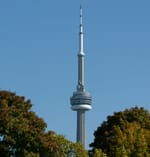Every hockey offseason has two big events: the NHL Entry Draft in late June, about a week after the last possible date of the Stanley Cup Final, and the free agent frenzy that fills the first few days of July. Woven in between those two dates are a lot of trades, more trade rumours and a lot of player signings.
This year, the month is October, but the timing is about the same on the front end. The back end of the offseason is where it all fades to the grey of unknown. We all remember well the significance of December 1 — that’s the RFA signing deadline — but this year, that’s the first suggested date of a new season. And while almost no one believes that’s remotely possible as a start date, it’s definitely not the RFA deadline. There is no date for that, just a commitment to set the date approximately one-third of the way into the next season once that season has a schedule.
There is no real date for the start of training camp — the first soft deadline to have players signed. There is no real date for the start of the next season — the second harder deadline, and the usual date on which teams have to be salary cap compliant.
NHL GMs, like the rest of us, like a deadline to focus their thinking. Most teams, even ones with cap space and some certainty about where they are in the standings wait until the week before the trade deadline to add players. Most pick trades happen after the draft has begun. Most RFAs get re-signed before training camp. A lot of settlements happen the morning of an arbitration hearing.
Without the end dates to focus the mind, the RFAs without arbitration rights might be waiting a long time to come to an agreement, and the ones with might just be motivated to exercise them in bigger numbers. We’ll find out soon about that. For now, the process has some strange timing to it, and some 2020-specific rules. Time for a refresher because the first RFA-related deadline comes before Qualifying Offers are due.
Club Elected Arbitration (First Window)
Sunday, October 4 at 5 p.m. (times are always the time in New York City): Club elected arbitration notification deadline.
This is the first window for teams to elect arbitration. Only certain RFAs have arbitration rights, and that is based on their number of years of professional experience as laid out in the CBA. For this window, the player’s base salary must be greater than $2,269,479 in the 2019-2020 season.
Because this period comes before the Qualifying Offer is due, the arbitration election can be in lieu of that QO.
The arbitrator is limited to an award no lower than 85% of the total of the previous year’s base salary, signing bonuses and performance bonuses. This window is rarely used unless a team thinks a player is overpaid, and that they can demonstrate that to an arbitrator and get an award below the QO.
The Leafs don’t have any players who meet the salary threshold.
Arbitration and Salary
The entire QO and arbitration process is based around salary not cap hit or AAV. It’s easy to mistake one for the other. Base salary is just that, the base amount after signing bonuses or performance bonuses that a player receives.
To use Ilya Mikheyev as an example, his AAV is $925,000, but that includes $92,500 in signing bonuses, so his base salary is only $832,500. That’s the number that gets plugged into the QO calculation.
Qualifying Offers
Wednesday, October 7 at 5 p.m.: Qualifying Offer deadline. This is also day-two of the Entry Draft, and this deadline should fall just as the draft is over.
Players who are not qualified become UFAs. But that does not mean their original team can’t or won’t re-sign them. They sometimes do.
A Qualifying Offer follows a set formula for amount, and type. Teams are not choosing the amount; rather, it is calculated on the base salary at a range of 100% - 110% depending on the salary amount. For all contracts signed after the implementation of the new CBA Memo of Understanding, the maximum QO is 120% of the AAV of the prior deal. This is not retroactive.
Qualifying Offere SPCs are always one-year in length, but the choice of a one-way or two-way deal is set by how many NHL games the player has played.
Many fans are angry when a team that is bad anyway because of a rebuild won’t “play the kids” enough. However, playing young players for full NHL seasons bring arbitration rights sooner, cuts time to UFA status and turns QOs into one-way deals sooner. For a star player, none of that matters. For the lower-ranked prospects, it does.
Players can simply accept their QO, beginning on October 9 at noon, and avoid any negotiation as Andreas Johnsson did in 2018. The QO expires on October 18. If a player does not accept their QO or it expires, they cannot become a UFA. Nothing a player does can make them a UFA, only the team can choose that by not issuing the QO.
The Maple Leafs have 6 pending RFAs, and there is no expectation that Evan Rogrigues will receive a QO due to the amount, but likely the rest will. All but Dermott and Bracco have arbitration rights.
Jeremy Bracco: two-way at $787,500
Travis Dermott: one-way at $874,125
Frederik Gauthier: two-way at $735,000
Ilya Mikheyev: two-way at $874,125
Evan Rodrigues: two-way at $2,000,000
Max Veronneau: two-way at $832,500
Player Elected Arbitration
October 10, 5 p.m. is the deadline for players to elect arbitration. Track all the players heading to arbitration at CapFriendly. Negotiation can continue, and a contract of any length or AAV can be signed at any time after arbitration is elected, however the new CBA MOU prohibits settlements after an arbitration hearing has started. It’s fair game up to that point, however.
Arbitration hearings are set to be scheduled between October 20 and November 8 this year, and the arbitrator can choose to hold the hearing remotely. The usual 48 hour time limit on the announcement of the award still holds.
The process of arbitration involves the team submitting an offer, the player an ask, and then they each present their case to the arbitrator. There are limits on what statistical information can be used. No RAPM charts. But the NHL-produced so-called advanced statistics are allowed. Traditionally awards fall very close to the simple average of the ask and the offer.
The length of the contract received in arbitration is either one or two years, and the party who did not elect arbitration gets to choose it. One exception is that players in their final year as RFAs can only get one-year deals.
Club Elected Arbitration (Second Window)
Just as the player arbitration window closes on October 10, the teams get one more window that opens for 24 hrs at 5:01 p.m.
Teams can only elect arbitration on eligible players to whom they’ve issued a QO that the player has not yet accepted. The team’s offer has to be at least the player’s base salary plus signing and performance bonuses.
Teams can only elect arbitration twice in the same offseason.
Walk-Away Rights
In certain circumstances a team can walk away from an arbitration award, and the player becomes a UFA. Players cannot. Only player-elected arbitration comes with walk-away rights for the team. Teams can also walk away from the second year of two-year awards, which makes the player a UFA at that time.
Only awards higher than $4,538,958 carry walk-away rights in this offseason.
For this season only, the CBA MOU provides a special process for when teams exercise their walk-away rights on a one-year award. The player may, within four days, elect to agree to an SPC with the team on the same terms the team had offered in their arbitration brief.
For example: Ryan Pulock elects arbitration. He asks for $7.5 million and the Islanders offer $5 million. The arbitrator awards him $6.25 million, and the Islanders decide to exercise their walk-away rights. Pulock can, as long as the team elected a one-year term, essentially demand a contract for $5 million instead of becoming a UFA.
The short timing to the possible start of training camp (November 15) and a flat salary cap is likely the reason for this rule. A hearing could be in November, conceivably after all the cap-strapped teams have made their rosters up. The UFA market might not be favourable to a player in those circumstances.
The deadline for a team to decide to walk away is 48 hours after their last arbitration award or settlement is issued.
Cap Space
From the date of free agency, October 9, until the start of the new season, whenever that is, teams are governed by the offseason salary cap calculation. Several aspects of QOs and arbitration affect that number. Unsigned RFAs are included at their QO amount until they either sign a new deal or the QO expires. All one-way contracts and QOs are counted regardless of where the player played. Two-way contracts or QOs are prorated by the number of days in the NHL the prior year.
This means that there can be an additional disadvantage to issuing a QO to a player if it’s required to be one-way. Travis Dermott is the only Leafs RFA due a one-way deal, so the Leafs don’t have to worry about that. His entire QO counts regardless because he spent the entire year in the NHL.
However, there is an advantage to not signing Dermott and Ilya Mikheyev before October 9 — that is assuming the Leafs want to maximize their offseason cap space on that day for some particular reason. Both players count against the offseason cap at their QO amount. The second they sign deals for a greater amount, the cap space shrinks.
There was an advantage to signing Denis Malgin for less than his QO before free agent day, since that raised (slightly) the available offseason cap space.
Someone like Jeremy Bracco or Max Veronneau have little effect on the offseason space (Bracco counts at one day out of 186, Veronneau for 10), so those negotiations can just go on as they normally would — assuming they would never be signed to one-way deals.
One class of player who often is signed to a one-way deal are veterans expected to play in the AHL. It’s a sign of status and a way to pay them a larger salary than most AHLers get, and is usually reserved for borderline NHLers or AHL stars. Nic Petan, Kenny Agostino and Kalle Kossila are all on one-way deals. The Leafs would need to delay signing any more players of that type if they want to keep that cap space large for some reason.
With the players currently on the roster, the offseason cap space would be $9.38 million. If Evan Rodrigues does not sign a contract and goes unqualified, that number becomes $11.38 million.



